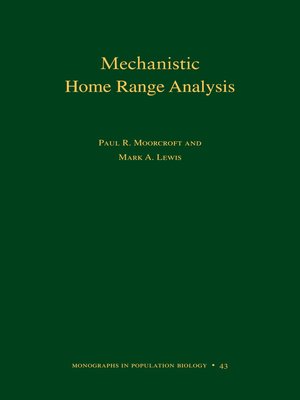
Sign up to save your library
With an OverDrive account, you can save your favorite libraries for at-a-glance information about availability. Find out more about OverDrive accounts.
Find this title in Libby, the library reading app by OverDrive.



Search for a digital library with this title
Title found at these libraries:
| Library Name | Distance |
|---|---|
| Loading... |
Spatial patterns of movement are fundamental to the ecology of animal populations, influencing their social organization, mating systems, demography, and the spatial distribution of prey and competitors. However, our ability to understand the causes and consequences of animal home range patterns has been limited by the descriptive nature of the statistical models used to analyze them. In Mechanistic Home Range Analysis, Paul Moorcroft and Mark Lewis develop a radically new framework for studying animal home range patterns based on the analysis of correlated random work models for individual movement behavior. They use this framework to develop a series of mechanistic home range models for carnivore populations.
The authors' analysis illustrates how, in contrast to traditional statistical home range models that merely describe pattern, mechanistic home range models can be used to discover the underlying ecological determinants of home range patterns observed in populations, make accurate predictions about how spatial distributions of home ranges will change following environmental or demographic disturbance, and analyze the functional significance of the movement strategies of individuals that give rise to observed patterns of space use.
By providing researchers and graduate students of ecology and wildlife biology with a more illuminating way to analyze animal movement, Mechanistic Home Range Analysis will be an indispensable reference for years to come.







